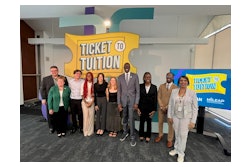 Dr. Marybeth Gasman is director of the Center for Minority Serving Institutions at the University of Pennsylvania.
Dr. Marybeth Gasman is director of the Center for Minority Serving Institutions at the University of Pennsylvania.Miriam Hall’s article on the lack of diversity in special admissions high schools in urban areas across the country (Slate, March 11, 2016) calls attention to the continued segregation and inequality of public education for minority students.
Hall notes that, of nine selective public high schools in New York City, Black and Latino students will likely make up no more than 10 percent of student populations next year despite the fact that they make up 70 percent of the public school population. This same pattern of inequity can be found at public schools across the country, such as in Boston, New Orleans and Fairfax, Virginia. And while many would like to claim that we are slowly making progress, Hall underscores the startling reality that in some cases it is actually getting worse.
According to Hall: “Sadly, when it comes to selective admission schools, it’s not so much a question of whether there’s likely to be racial disparities as it is how big and which kind.”
While there are several overlapping explanations for this disparity—including the fact that Black and Latino students are more likely to live in poverty, have attended inadequate elementary and middle schools, and have families that are unfamiliar with the application process—there is one ray of light in the overall picture. Hall notes that: “At Benjamin Banneker Academic High School in Washington, D.C., 81 percent of the students are black, a number that falls much closer to district averages.”
What makes this school different? According to Hall, the school “has strong ties to Howard University, a historically black institution.”
Historically Black Colleges and Universities (HBCUs) have a longstanding commitment to social justice issues—such as educational equity and opportunity. Like other Minority Serving Institutions (MSIs), part of the core mission of HBCUs is to serve and enrich the communities in which they are situated. Many of the students who attend HBCUs are low-income, first-generation college students who come from and have families rooted in the surrounding community.
In our work at the University of Pennsylvania’s Center for Minority Serving Institutions, we have found that HBCU teacher education programs have been instrumental in changing the pipeline and landscape for minority students in public education in multiple ways. Even though HBCUs represent only 4.4% of all the institutions conferring bachelors’ in education, they account for 26% of all Black students receiving a degree in this field. While, at HBCUs, these prospective teachers benefit from coursework and professional development that emphasizes culturally relevant pedagogy and challenges deficit models of teaching and learning for poor and minority students.
In addition, HBCU teacher education programs are continuing to forge strong University-School partnerships like that at Banneker High School. Through these partnerships, teacher education students spend additional clinical hours student teaching, mentoring students, and participating in service learning and community action projects, such as parent outreach programs. Banneker is located across the street from Howard University, making such partnerships even more genuine and sustainable. It is not a coincidence that many HBCU teacher education graduates are committed to working in high-need and underserved schools upon their certification.
Of course selective high schools have to continue to improve outreach to students of color and have a commitment to diversity and educational equity. A more qualified and diverse teaching staff sets the bar higher for a more diverse student population. Students who attend elementary and middle schools with teaching staffs that are committed to educational equity and opportunity are more likely to be academically prepared to attend selective high schools. Students who attend high schools with greater numbers of minority teachers not only benefit from a more multicultural approach and higher expectations, they have role models of other minorities who have gone to college and become successful professionals in their chosen field.
Perhaps it is time for us to not be surprised to find successful partnerships like the one between Banneker and Howard; we should collectively uphold MSIs as models of success in a variety of spheres, including teacher education.


















